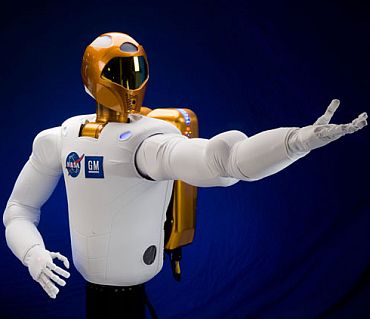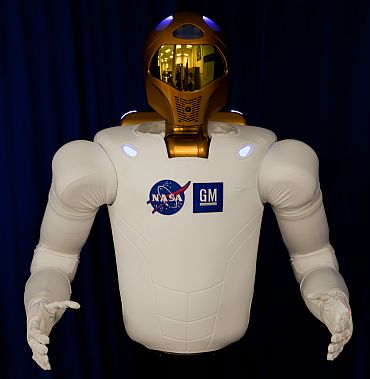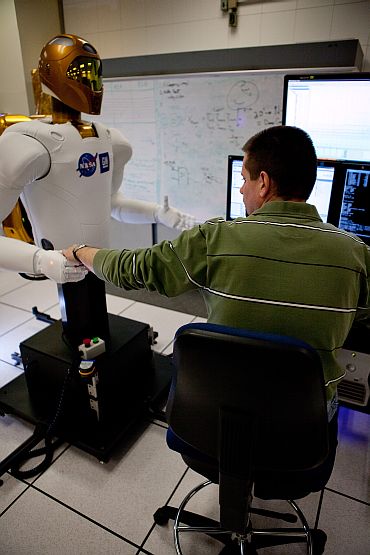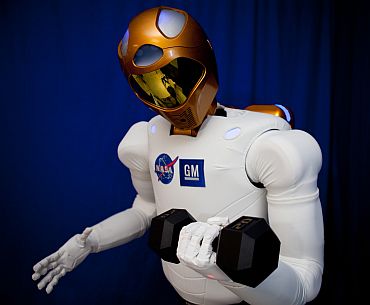Photographs: Courtesy NASA
NASA is preparing to launch Robonaut 2, the first human-like robot designed for use in space.
The humanoid robot, which resembles the torso, head and shoulders of a person, was designed by NASA and General Motors to work alongside astronauts to complete chores and repairs aboard the International Space Station.
Click on NEXT to see more photos of Robonaut 2...
'Idea was the robot had to be capable enough to work right next to humans'
Once aboard the space station, it will be tested to be sure it works as expected in the zero gravity environment, and later will be tested on other tasks including handling flexible fabrics and possibly helping out with some light housework.
It has soft palms that can grasp and envelop objects
It is also a "soft" robot, Ambrose said. It is also padded all over to prevent nicks and scratches.
In-built safety features
It will wipe handrails and vacuum air filters
Two potential uses the team would like to start testing include having the robot wipe down handrails and vacuum air filters -- two tedious tasks that station astronauts are currently required to complete.
The launch "might be just a single step for this robot," Ambrose said.
Robonaut can take over simple, repetitive, dangerous tasks
Advanced technology spans the entire R2 system
Advanced technology spans the entire R2 system and includes: optimised overlapping dual arm dexterous workspace, series elastic joint technology, extended finger and thumb travel, miniaturized 6-axis load cells, redundant force sensing, ultra-high speed joint controllers, extreme neck travel, and high resolution camera and IR systems.
First dexterous humanoid robot in space
Road ahead for Robonaut
Really, a giant leap
A four-wheeled rover called Centaur 2 is being evaluated at the 2010 Desert Field Test in Arizona as an example of these future lower bodies for R2.
Really, a giant leap forward for a tin man!











article